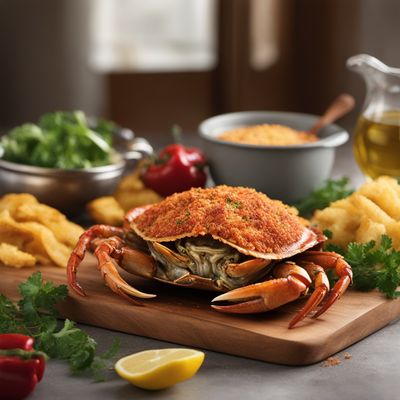
Ingredient
King crabs
The Majestic King Crab
King crabs are characterized by their long, spindly legs and a body covered in a hard exoskeleton. The meat is sweet, tender, and has a delicate flavor that is often compared to lobster. King crab legs are typically cooked by boiling or steaming and are commonly served with melted butter or a tangy dipping sauce.
Origins and history
King crabs are native to the cold waters of the North Pacific Ocean, particularly in the Bering Sea and the Gulf of Alaska. They have a rich history of commercial fishing, with the majority of king crabs being harvested in the United States, Russia, and Norway. King crab fishing is a dangerous and challenging profession, often depicted in popular culture.
Nutritional information
King crabs are a good source of lean protein and are low in fat. They also provide essential nutrients like vitamin B12, zinc, and selenium. However, they are relatively high in cholesterol, so they should be consumed in moderation.
Allergens
King crabs may cause allergic reactions in individuals with shellfish allergies.
How to select
When selecting king crabs, look for specimens that are alive or freshly cooked. The legs should be intact, with no signs of discoloration or foul odor. The shells should be firm and unbroken. If purchasing frozen king crab legs, ensure that they are properly sealed and free from freezer burn.
Storage recommendations
To maintain the freshness of king crab legs, store them in the refrigerator at temperatures below 40°F (4°C). Keep them wrapped in plastic or in a sealed container to prevent them from drying out. Cooked king crab meat should be consumed within 2-3 days of purchase.
How to produce
King crabs are commercially harvested from the wild and cannot be easily produced or cultivated. They require specific oceanic conditions and a complex ecosystem to thrive.
Preparation tips
King crab legs can be prepared by boiling or steaming them until the meat is opaque and firm. They can be served hot or chilled and are commonly enjoyed with melted butter, lemon wedges, or a zesty cocktail sauce. The meat can also be used in various seafood dishes like crab cakes, pasta, or salads.
Substitutions
Snow crab legs can be used as a substitute for king crab legs, as they have a similar taste and texture. However, snow crab legs are smaller and may require more pieces to achieve the same amount of meat as king crab legs.
Culinary uses
King crabs are commonly used in dishes like crab bisque, crab legs with garlic butter, and crab salad. They are also a popular choice for seafood boils and are often served as a centerpiece for special occasions.
Availability
King crabs are commonly available in countries like the United States, Russia, Norway, and Japan.


